Let’s get to know dolmadakia or dolmades or dolma!
1. What is Dolmadakia made of? Dolmadakia are made of grape leaves stuffed with a mixture of rice, herbs (such as dill and mint), and often include ground beef or lamb. They are seasoned with lemon juice, olive oil, salt, and pepper.
2. How do you eat Dolmadakia? Dolmadakia are typically eaten with your fingers as an appetizer or side dish. They can be served with a slice of lemon for extra zest.
3. Are dolmades Greek or Turkish? Dolmades are a part of both Greek and Turkish cuisines, with variations in recipes and names. Both cultures have a long-standing tradition of preparing stuffed grape leaves.
4. Are Greek dolmas healthy? Greek dolmas can be quite healthy. They are rich in fiber, vitamins, and minerals, especially when made with olive oil and lean meat or as a vegetarian dish.
5. Do you eat dolmas cold or warm? Dolmas can be eaten both cold and warm, depending on personal preference and the specific recipe. They are often served cold as an appetizer.
6. Do you eat dolmades with your fingers? Yes, dolmades are traditionally eaten with your fingers, making them a popular and convenient appetizer or snack.
7. What does grape leaf taste like? Grape leaves have a slightly tangy and herbaceous flavor, which complements the savory filling. They are soft and edible once cooked.
8. Can humans eat grape leaves? Yes, grape leaves are edible and commonly used in Mediterranean and Middle Eastern cuisines. They are nutritious and rich in vitamins.
9. What is the difference between dolmas and dolmades? “Dolmas” is the Turkish term, while “dolmades” is the Greek term for stuffed grape leaves. The recipes may vary slightly between the two cultures.
10. Are dolmas high in calories? Dolmas are relatively low in calories, particularly when made with vegetables and rice. The calorie content can increase if they include meat or are cooked with more oil.
11. Who invented dolmades? The exact origin of dolmades is not clear, but they are a traditional dish in the Mediterranean and Middle Eastern regions, with historical roots dating back to the Ottoman Empire.
12. Can you use any grape leaves for dolmas? Technically, any grape leaves can be used for dolmas, but it’s best to use leaves from grape varieties that are tender and not too fibrous. They should also be free of pesticides if fresh.
In conclusion, dolmadakia is a versatile and flavorful dish that reflects the rich culinary traditions of the Mediterranean. Whether enjoyed as a hearty main or a light appetizer, these stuffed grape leaves are a delightful treat that brings the essence of Greek cuisine to your table.
Ingredients for Dolmadakia Here’s what you need for about 4-6 servings:
- Grape Leaves: 50-60 leaves, available preserved in brine
- Long-Grain Rice: 1 cup, uncooked
- Olive Oil: 1/3 cup, plus a little extra
- Onion: 1 large, finely chopped
- Ground Beef or Lamb (optional): ½ pound
- Fresh Dill: ¼ cup, chopped
- Fresh Mint: 2 tablespoons, chopped
- Lemon Juice: 2 tablespoons
- Salt and Pepper: To taste
- Water: As needed for cooking
- Lemon Slices and Mint for Garnish
Shopping List
- SHOPPING LIST
- Preserved Grape Leaves
- Long-Grain Rice
- Olive Oil
- Large Onion
- Ground Beef or Lamb (optional)
- Fresh Dill
- Fresh Mint
- Lemons
- Salt
- Black Pepper
Cooking Instructions
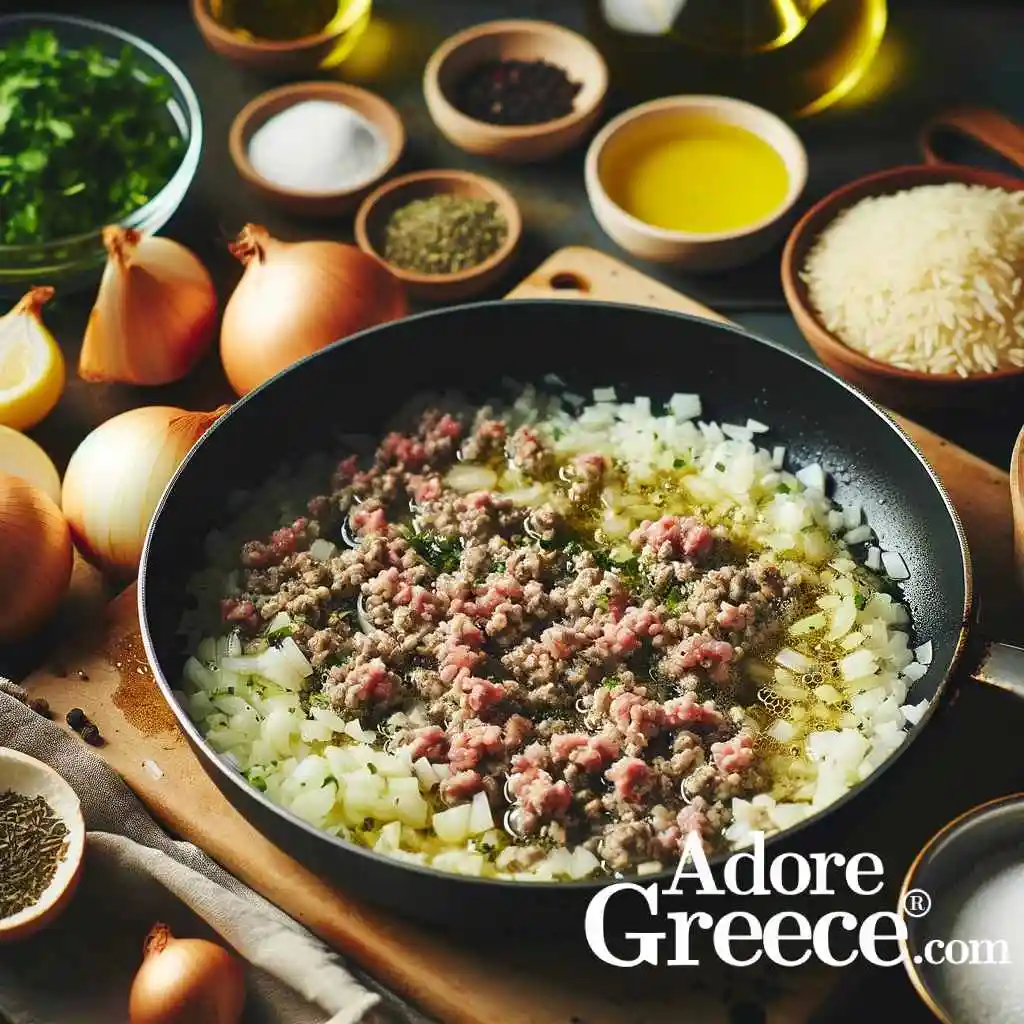

Prepare the Filling: Heat olive oil in a skillet over medium heat. Sauté onions until soft. If using meat, add it now, cooking until brown. Mix in the rice, herbs, lemon juice, salt, and pepper. Cook briefly, then take off the heat.
Ready the Leaves: Rinse the grape leaves under cold water and trim any thick stems. Cut large leaves in half if necessary. Submerge the leaves under hot water for 30 minutes.
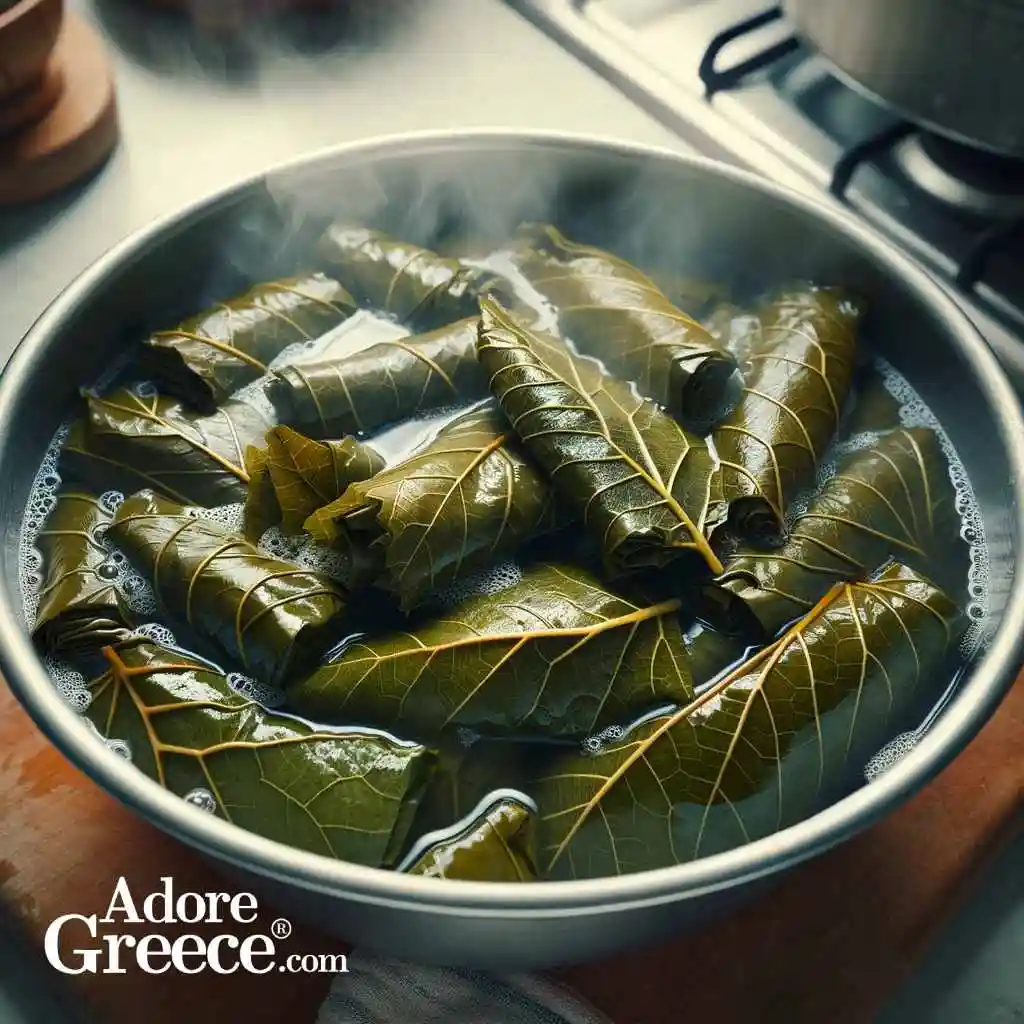

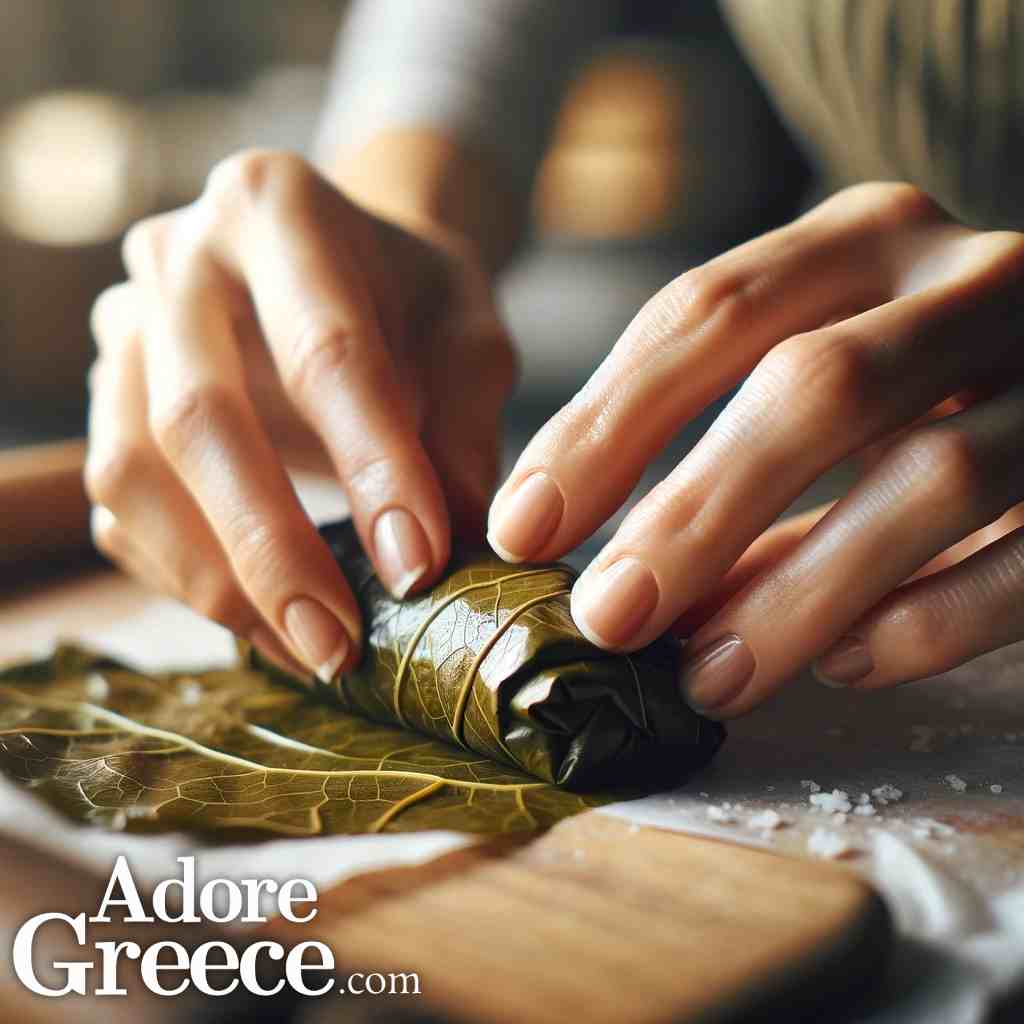

Roll the Dolmadakia: Place a leaf shiny side down. Put a teaspoon of filling near the leaf’s base. Fold the sides and roll up from the bottom, securing the filling. Repeat with all leaves.
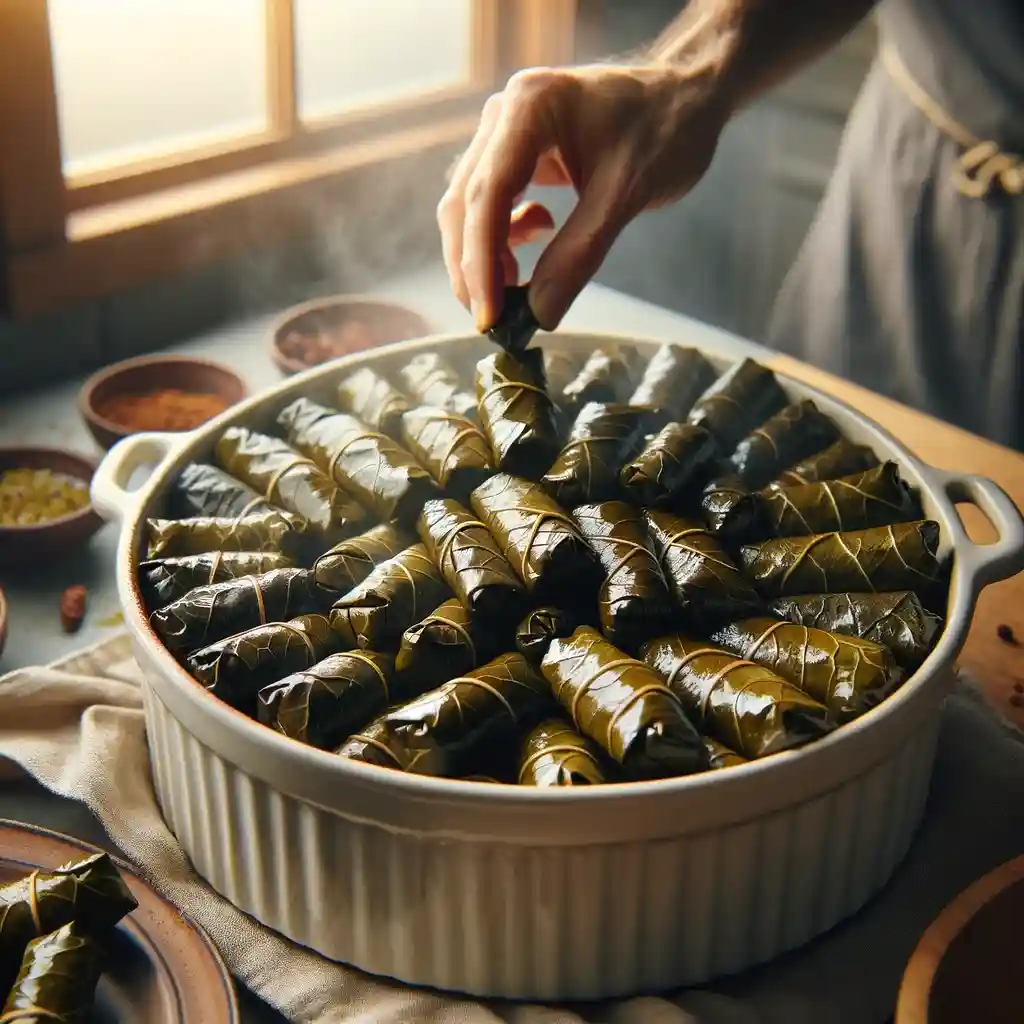

Cook the Dolmadakia: Lay them seam side down in a pot. Cover with water, add a drizzle of olive oil, and place an inverted plate on top. Boil, then simmer covered for 40-50 minutes.
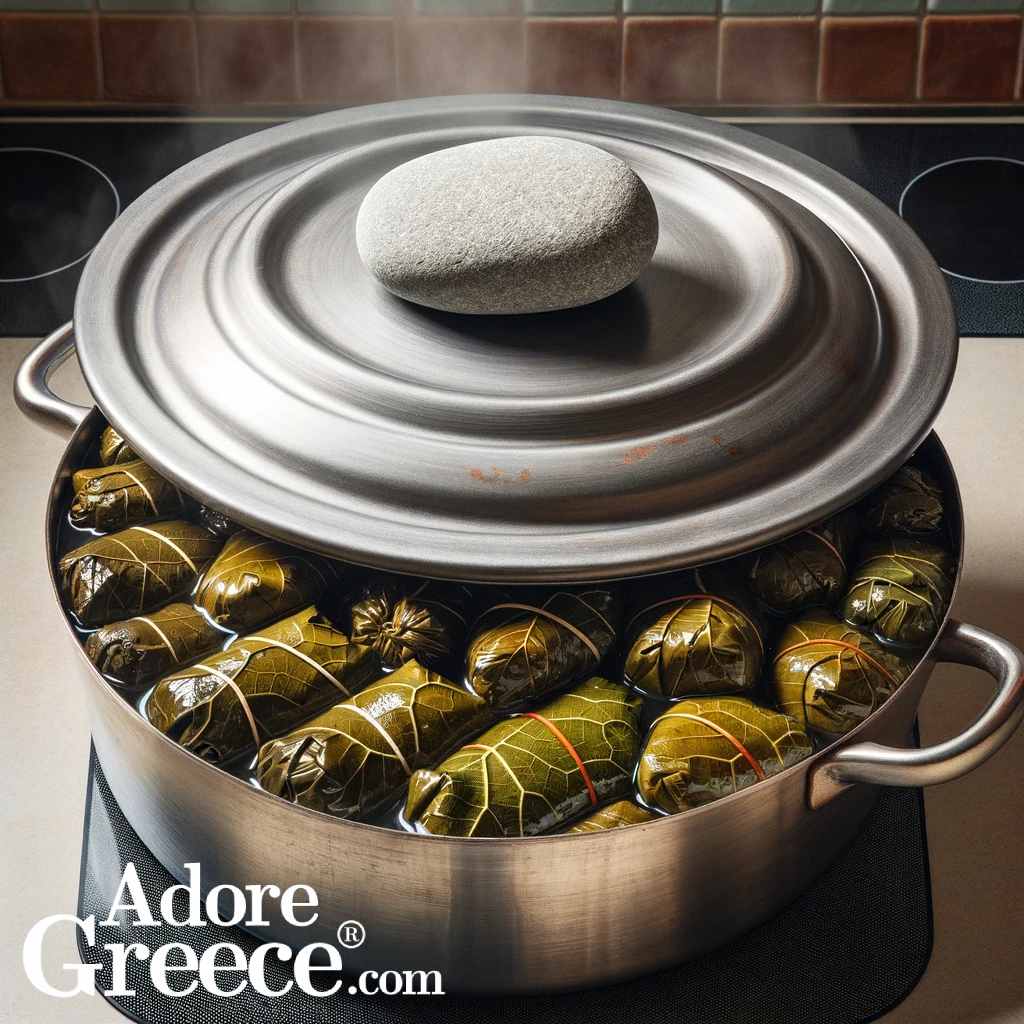

Tips for Perfect Dolmadakia
- Vegetarian Option: Skip the meat and add extra herbs or pine nuts.
- Sauce Pairing: Serve with avgolemono, a Greek lemon-egg sauce, for added zest.
- Storing: They keep well in the fridge and are great as a cold snack.
Dolmadakia, while requiring some patience and care, are immensely rewarding to make and even more delightful to eat. These small, savory parcels are not just a dish but a celebration of Greek heritage and communal dining. Perfect for any occasion, dolmadakia will transport you and your guests to the heart of Greek culture with every bite. Enjoy crafting this time-honored recipe and share the joy of Greek cooking!







































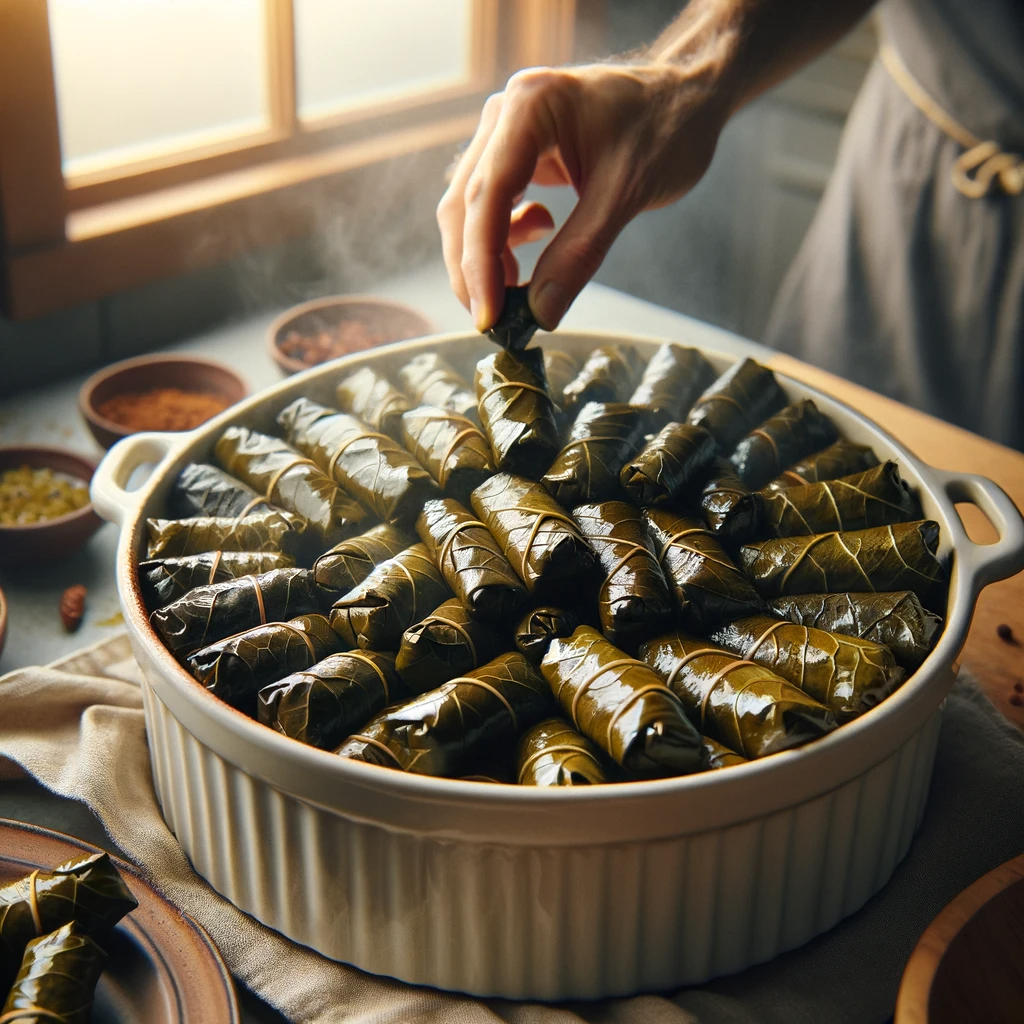


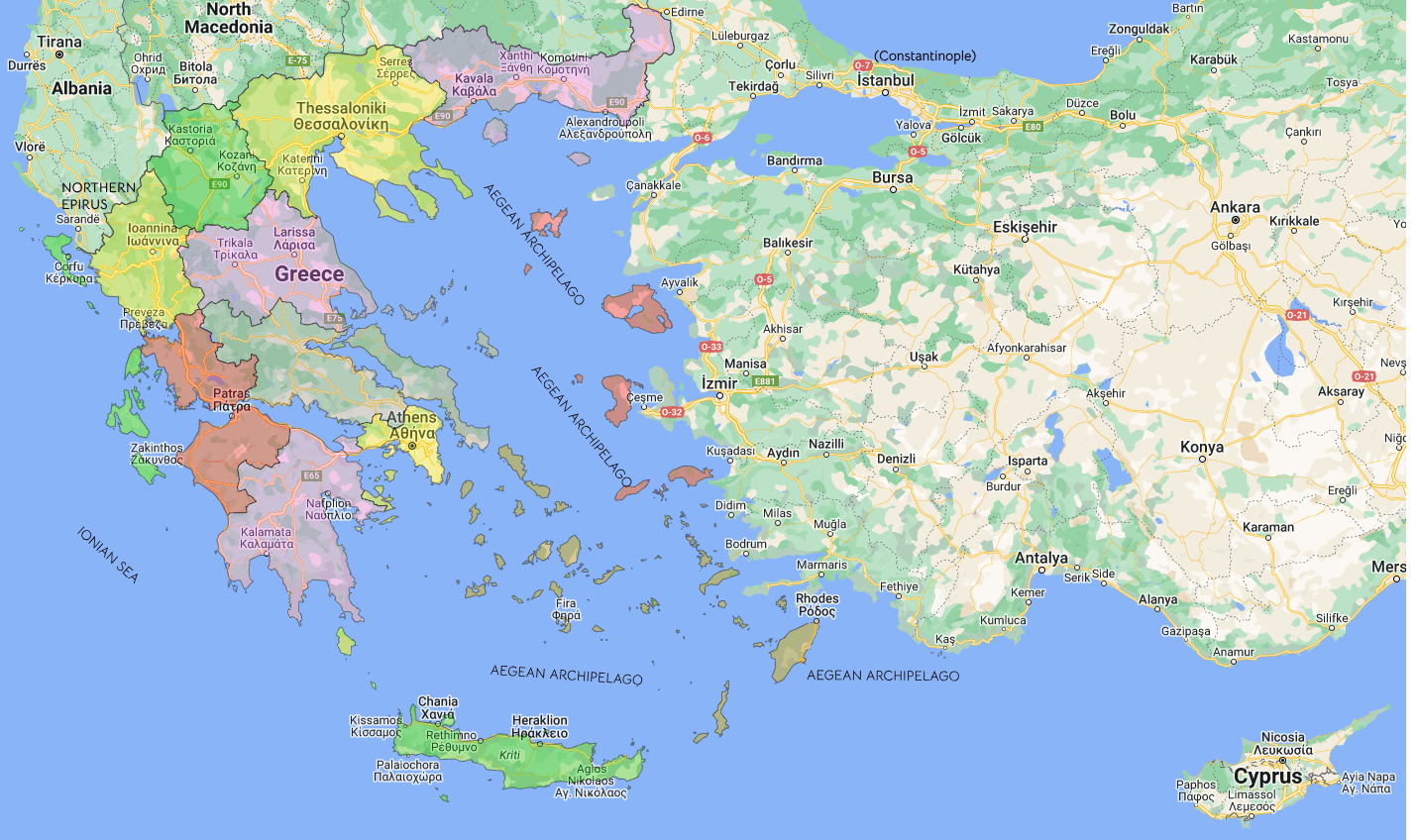





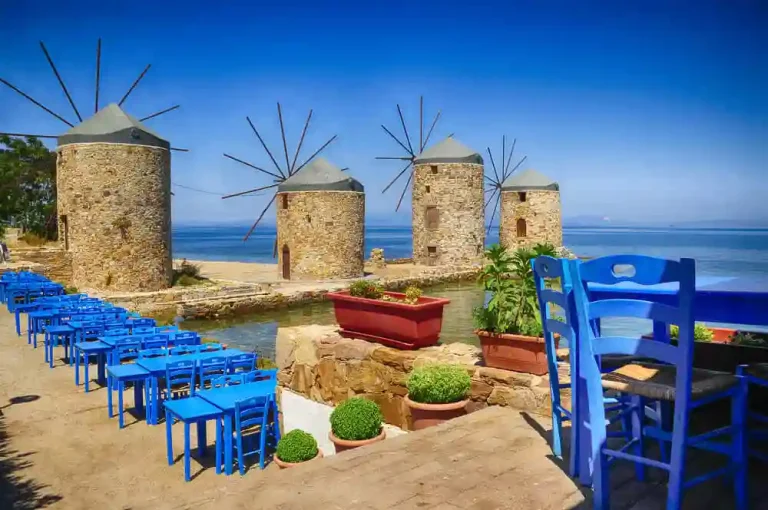
Comments are closed